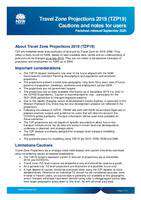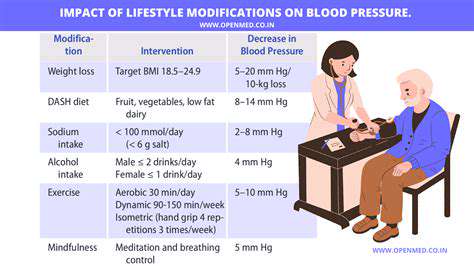Medicinal Mushrooms in TCM: Reishi, Shiitake, Cordyceps

Cordyceps: A Powerful Adaptogen
For centuries, traditional healers have harnessed the power of Cordyceps, a remarkable fungus with a unique life cycle involving insect hosts. Unlike conventional mushrooms, Cordyceps develops through a parasitic relationship with caterpillars and other insects, resulting in a distinct biochemical profile. This unusual growth process creates a rich array of bioactive compounds that modern science is only beginning to understand. Across Asian medicinal traditions, practitioners have long valued this organism for its balancing effects on bodily systems.
Contemporary researchers are now decoding how Cordyceps interacts with human physiology. Initial laboratory studies reveal fascinating interactions between Cordyceps compounds and cellular energy pathways. Some clinical trials suggest possible benefits for oxygen utilization during physical activity, though results vary across study populations. The scientific community agrees that more controlled, large-scale human trials are necessary to validate these preliminary observations.
Potential Benefits of Cordyceps
Cordyceps stands out among natural compounds for its potential adaptogenic properties. These substances help biological systems maintain equilibrium when facing various stressors. Preliminary evidence suggests Cordyceps may support homeostasis through multiple pathways, including endocrine regulation and immune modulation.
Athletic performance research presents intriguing possibilities. Small-scale studies note improved time-to-exhaustion metrics in certain endurance activities after Cordyceps supplementation. However, sports scientists caution that individual responses differ significantly, and optimal dosing regimens remain unclear for various athletic disciplines.
Cordyceps and Immune Function
Traditional applications of Cordyceps often focused on immune support, a use that's gaining scientific attention. Modern immunological studies demonstrate complex interactions between Cordyceps extracts and immune cell activity. Research indicates potential modulation of inflammatory responses, though the clinical significance requires further exploration in human subjects.
Cordyceps and Energy Production
Many users report increased vitality with Cordyceps supplementation. Laboratory analyses suggest Cordyceps compounds may influence adenosine triphosphate (ATP) production, the cellular currency of energy. These findings correlate with traditional claims about the fungus's energizing properties.
The complete picture of Cordyceps' metabolic effects remains unclear, highlighting the need for more sophisticated cellular studies. Researchers particularly emphasize the importance of understanding how different extraction methods affect bioactivity.
Cordyceps and Other Potential Applications
Emerging research explores Cordyceps' potential cardiovascular benefits, including possible effects on blood flow and oxygen utilization. Some studies suggest anti-inflammatory properties that could have broad therapeutic implications. These diverse research avenues demonstrate the fungus's multifaceted nature.
As with any supplement, medical professionals recommend consulting healthcare providers before use, especially for individuals with pre-existing conditions or those taking medications. The scientific community continues to investigate optimal preparation methods and dosage protocols for various health applications.
Important Considerations and Cautions

Safety Protocols
Implementing rigorous safety measures forms the foundation of responsible operations. Developing comprehensive safety protocols requires understanding both theoretical principles and practical applications. Effective systems combine clear documentation with hands-on training to ensure proper implementation across all organizational levels.
Ongoing education programs maintain safety awareness, covering everything from routine hazard recognition to emergency scenario preparedness. These initiatives work best when incorporating regular drills and competency assessments to verify understanding and implementation.
Risk Assessment and Mitigation
Systematic risk evaluation represents a critical proactive measure. This process involves identifying potential failure points, analyzing their probability, and developing targeted prevention strategies. Thorough risk analysis enables organizations to address vulnerabilities before they manifest as incidents.
Dynamic risk management requires periodic reassessment to account for operational changes. This iterative approach ensures safety systems evolve alongside organizational development and environmental factors.
Resource Allocation and Management
Strategic resource planning directly impacts project viability. Beyond financial considerations, effective management requires careful coordination of personnel, equipment, and temporal factors. Realistic projections combined with flexible allocation strategies help navigate unforeseen challenges.
Monitoring systems should track resource utilization against benchmarks, allowing for timely adjustments. This data-driven approach maximizes efficiency while minimizing waste across project lifecycles.
Communication and Collaboration
Transparent information exchange serves as the backbone of successful teamwork. Establishing multiple communication channels ensures message redundancy and comprehension verification. Fostering open dialogue encourages proactive problem-solving and innovation.
Regular synchronization meetings, combined with digital collaboration tools, help maintain alignment across distributed teams. Documenting decisions and action items provides accountability and historical reference.
Legal and Regulatory Compliance
Navigating the regulatory landscape requires diligent attention to detail. Compliance teams must monitor evolving legislation across all relevant jurisdictions. Implementing robust documentation systems provides audit trails demonstrating adherence to requirements.
Proactive compliance programs incorporate regular internal reviews and external consultations to identify potential gaps before they become violations. This preventative approach safeguards organizational reputation and operational continuity.
Contingency Planning
Developing resilient operational frameworks involves anticipating disruption scenarios. Effective contingency plans outline clear response protocols while allowing for situational adaptability. Scenario-based training ensures team preparedness for various emergency conditions.
Regular plan testing through tabletop exercises identifies weaknesses before real-world implementation. This practice builds institutional memory and response confidence across all organizational levels.











